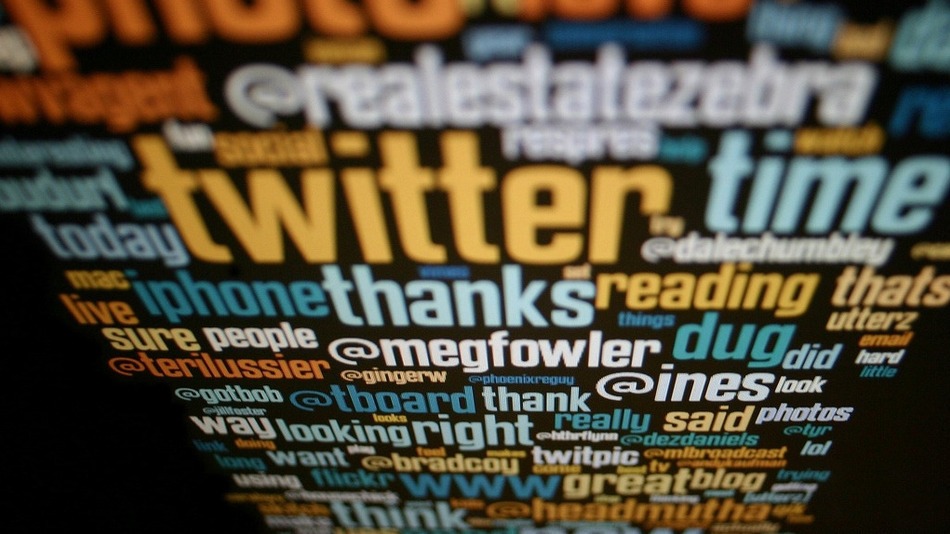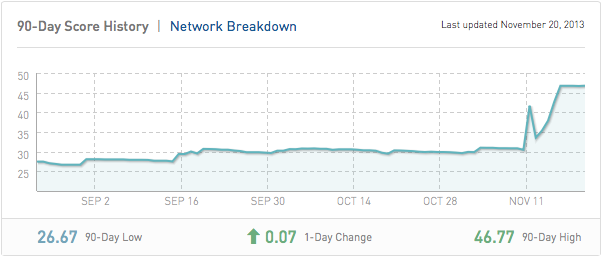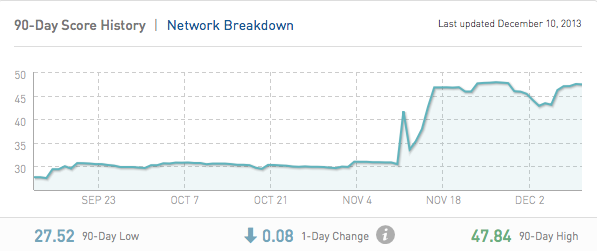
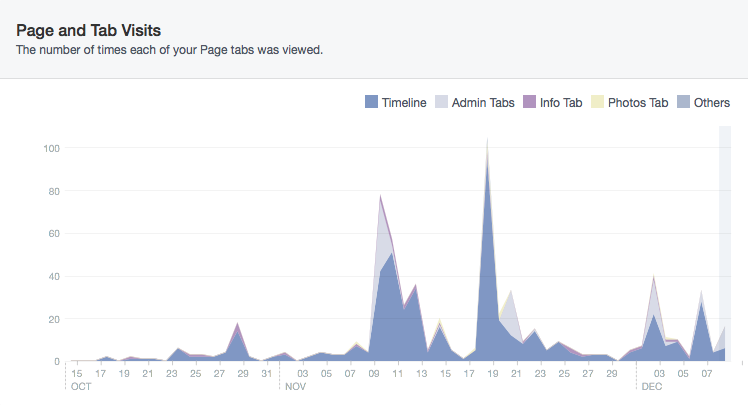
Because I have had two media campaigns I am going to choose to write about the one that has been able to propagate as much as possible. Divest UMaine is an ongoing project that i plan to carry on next semester but their goal requires me to do a lot of backend coding that I need more time to do, but I had immediate results from WMEB 919. I think really the biggest help for this project was just to get the name out there. A lot of people as it turned out merely didnt know about the station at all so I made sure to make a well designed flyer to give the station as much of a legitimate feel as i could. By putting the flyer right on people’s windshields it let them have the actual fm number as they were getting in their car, which is where most people listen to the radio. I also included QR codes to make it easy for people to link right there and then to the facebook and twitter pages. After we had the flyer release I held a facebook sweatshirt design graphic that increased the Klout score by ten points. Basically it came down to recognition of the station and I let people become involved themselves. I think most people just by knowing that we have a campus radio would be interested enough to follow it, the problem was just getting the recognition out. However, i had to think about how to get people to keep coming back and/or interacting with the facebook and twitter pages to boost recognition. The sweatshirt graphic contest was a great success in social media interaction because we were creating original content and asking people to rate their favorite graphic. I think if it wasnt for that contest, WMEB would have had a lot of likes and followers on facebook and twitter, but i dont think those pages would have the steady amount of interaction that it does now
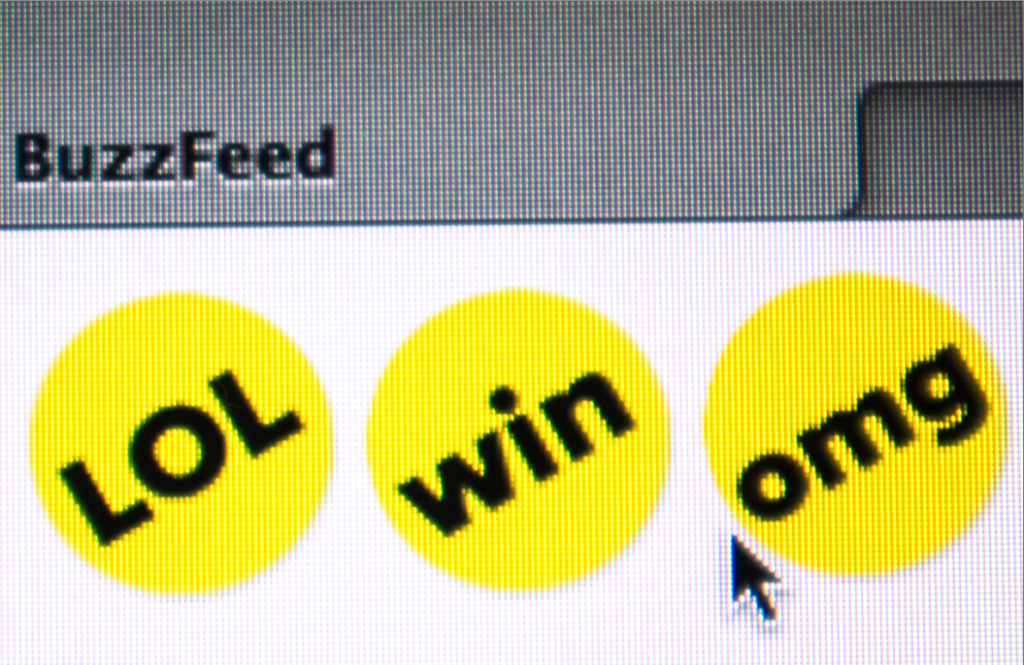
BuzzFeed is a social publisher with 30 million monthly visitors and Facebook is our largest source of traffic. Our team spends lots of energy thinking about how to make content that Facebook users love.
For the first time, nearly a billion people across the world are all connected to each other through a single network and are able to share ideas, news, entertainment, and inspiration with an unprecedented number of peers. Back in the 1970s, sociologists began thinking in theory about this sort of network, and they developed concepts like the famous “six degrees of separation.” Then, the notion was an intellectual curiosity — but today these ideas actually matter in practice. Every day, something amazing spreads to millions of people on Facebook — powered entirely by people sharing things they love with their friends. It is a very exciting time to be in the publishing business.
Today I am pleased share some of what I have learned over the years. Here are my 13 ways to make your content go viral on Facebook.
1. Have a Heart
Many publishers get stuck in their own heads and forget that humans are emotional creatures. Make content that takes human emotion seriously.
A great example was BuzzFeed’s biggest post of 2011 which let people relive the powerful emotions of the entire year.
2. Content Is About Identity
Sharing something on Facebook tells the world who you are and where you stand. For example, I’m left-handed so, like many other lefties, I was excited to share this post.
3. Make Content YOU Would Share Yourself
Before publishing, do a simple thought experiment: “If I saw this in my newsfeed, would I share it?” If the answer is “no” think about why and keep improving the content until you would be proud to share it yourself. If you wouldn’t share something, why should anyone else?
4. Don’t Focus on Tricks
Too many “social media experts” get obsessed with the minutia of social platforms, spend their time developing tricks to get more engagement, and think popularity is the result of a technical hack.
You will have much more long term success if you abstract away from the specifics of the platform and think about the deeper human dynamics in play. Doing an overly aggressive integration might get you lots of traffic for a few months but you will annoy lots of users, they will resent you. What’s more, the Facebook platform will continue to evolve to please users, and you will miss the long term opportunity to make great content that people love enough to share on their own.
5. Be Yourself
Publishers have more success when they stick to their own DNA and resist the temptation to copy other sites. For the Huffington Post, that might be a blog post explaining why Paul Ryan should be forced off the GOP ticket.
For Funny Or Die, it might be a parody video staring John Goodman about KFC-loving gays.
And if you are TMZ, it might be a story about Prince Harry getting naked in Las Vegas (NSFW).
When I was at Huffington Post, many sites tried to copy us, but their imitations always felt hollow — and they never worked. This is why BuzzFeed forged our own unique path, and the sites that try to copy us won’t do nearly as well as the sites that stay true to their own paths.
6. Try Lots of Ideas
On the social web, nobody bats 1000. The best strategy is to have an open mind, try lots of ideas, learn from your successes and failures, and hone your instincts. The best way to get good at poker is to play lots and lots of hands. The best way to get good at making social content is to makes lots of it and learn as you go.
7. Capture the Moment
Don’t create content in a vacuum! When everyone was obsessed with news stories about a religious group that believed the rapture was imminent, we published a post called “32 Pictures You Need To See Before You Die”.
When everyone was obsessed with Olympic swimming we published “Olympics or Gay Porn?”
Your creative ideas will go further if they capture the zeitgeist.
8. Cute Animals Deserve Respect
People joke that the Internet is made for kittens. But animals play an important role by helping us humans feel closer to each other. When you go home for the holidays, the whole family gathers around the family dog, pets the dog, feels affection for the dog, but also feels closer to each other. On Facebook, the billions of animal pictures let people say “awwwww” with the people in their lives and that shared empathic emotion is a big part of being human. In Philip K. Dick’s classic sci-fi book, “Do Androids Dream of Electric Sheep,” one of the ways to tell if someone was human (and not an android) was empathy toward animals. If you are worried someone you know might be an android, send her this post and if she shows no emotion, you know she is actually a robot.
9. Humor Is Inherently Social
You go out to dinner with your friends, everyone tells jokes and laughs, and the next day you don’t remember the jokes — but you feel closer to your friends. Laughing together on Facebook brings millions of people closer each day. It isn’t surprising that the most popular BuzzFeed badge is “LOL.”
10. Don’t Ignore Mobile
Years ago, I hated mobile devices because they stopped things from going viral because some phones couldn’t reliably display images and videos. That’s changed completely in the past few years. Now something needs to work on mobile phones or it can’t go viral. One of the main ways people get to BuzzFeed, for example, is opening the Facebook app, checking their newsfeed, seeing a fun BuzzFeed story, and clicking through to a mobile web version of the story. Mobile now makes up over one third of our traffic and its share is growing. We spend lots of time making sure our mobile web experience is excellent, and you should do the same if you want your stories to be widely shared.
11. Nostalgia Is Inherently Social
People love to reminisce about the past. For example, check out these 12 Extremely Disappointing Facts About Popular Music.
At BuzzFeed, we even launched a “Rewind” section devoted entirely to nostalgia.
And with our partner GE, we created a Time Machine that lets you see BuzzFeed from different decades and it turns out the site was WAY better in the 1980s!
12. Human Rights Are Inherently Social
Facebook connects the world, when people are connected they have more empathy for people different from them. So it is not surprising the content advocating human rights is very popular on Facebook. The Arab Spring, women’s rights, and gay marriage are all things many people on Facebook are proud to share. BuzzFeed is nonpartisan and doesn’t take political stands, but basic freedoms shouldn’t be political which is why we support marriage equality with posts like this one.
13. Don’t Post Things People Are Embarrassed to Share
Some things are very interesting to people but embarrassing to share. Facebook is for content people are proud to share publicly. Avoid content about diet pills, laser hair removal, trashy celebrity gossip, and porn. That’s what Google is for!
Article Here…






